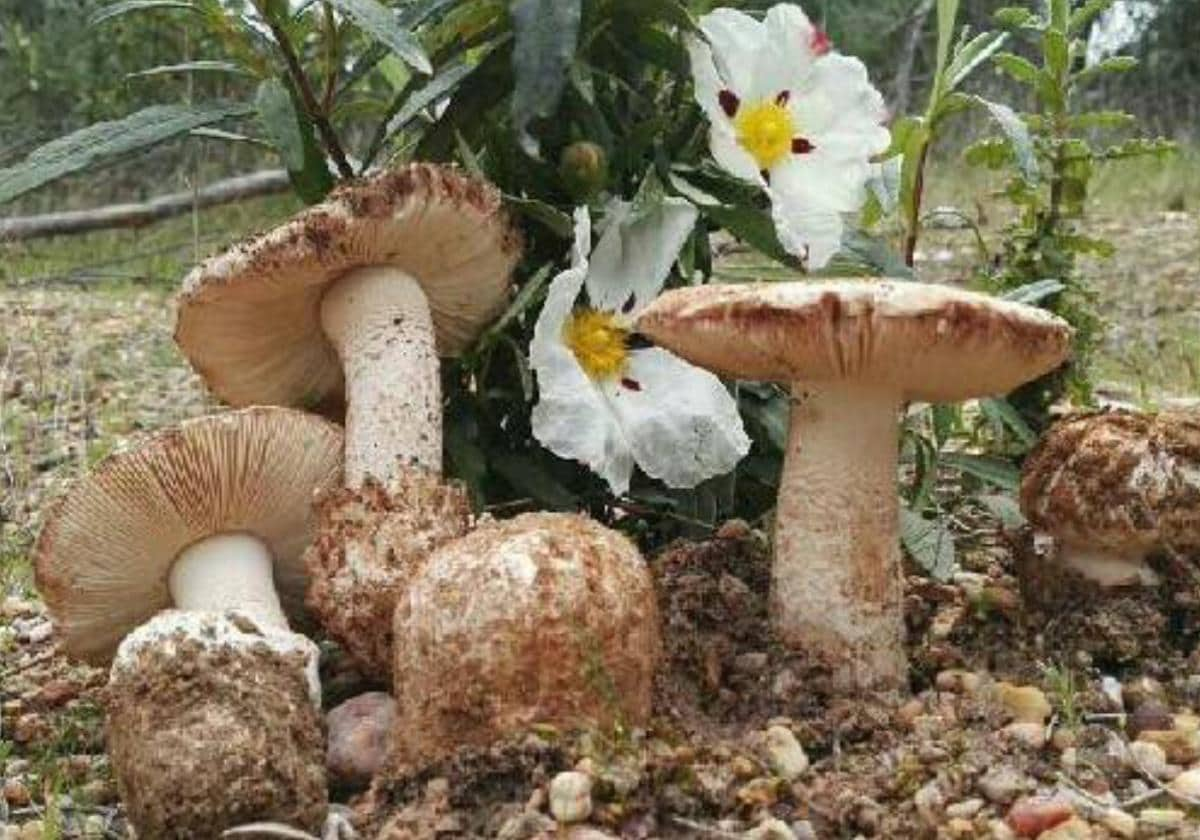

Sections
Highlight

Alekk M. Saanders
Huelva
Monday, 29 January 2024
Andalucía, with its varied landscapes and rich biodiversity, has all the necessary conditions to be a mushroom hunter's paradise. Huelva province is considered an ideal place for mycology enthusiasts, thanks to the forests of the Sierra de Aracena and Picos de Aroche natural park; with their approximately 800 species of wild mushroom, they are considered one of the most important areas in Europe for mushrooming.
Enthusiasts often travel in search of mushroom foraging opportunities and these "mycological tourists" do not have to wait till autumn in the westernmost part of Andalucía. In fact here, unlike in more northern countries, the season starts as early as the end of January, thanks to the wild edible mushroom Amanita ponderosa, known as the "gurumelo" by the locals. Hundreds of enthusiasts head to the Sierra de Aracena at this time of year in search of this mushroom which is endemic to central and western Andalucía, a trip that combines sport, cuisine and contact with nature.
"The end of January and February is a good time to pick up your basket and hurry into the woods in search of Andalucía's precious culinary treasure, Amanita ponderosa. Until recently, its range of distribution was very limited and it was thought to be native to the mountains of Huelva. However, in addition to Andalucía, it grows in neighbouring southern Extremadura, as well as in Ribatejo and Alentejo [southern Portugal]," Andalusian mycology guide, Tomás Hermoso, told SUR in English.
"Local mushroom lovers call it gurumelo. To them, it is not just a mushroom, but THE mushroom," explained the expert, adding that for some locals, gurumelo is synonymous with "mushroom". Some authors say the word gurumelo comes from Latin and is a phonetic variant of the word "cogumelo", which is a common name for mushrooms and fungus in Portugal and Galicia.
However there is another version of how the mushroom got its nickname. Before emerging from the ground, it takes the form of a small egg-type lump, or gurumelo. This develops under the ground, and small cracks or a small mound of earth between winter and summer are clues of its presence.
Its scientific name, Amanita ponderosa, comes from the Greek 'Amanus', meaning a mountain in Cilicia (an ancient region located in southern Asia Minor) where Amanite mushrooms were abundant. And 'ponderosa' is from the Latin 'ponderosus', meaning 'heavy', which is exactly the impression anyone gets when picking one up.
T. Hermoso
"Like other representatives of this group of amanitas, the gurumelo changes the shape of its cap during growth. At a young age it is potato-shaped, then, as it grows and breaks the volva, the cap appears 6 to 12 centimetres in diameter, at first convex and then expanded. The general appearance is stout and large. The gurumelo is so exquisite and highly prized that it is sometimes called 'the queen' of Andalusian mushrooms," Hermoso explained.
Interestingly, the gurumelo forms a symbiosis with holm and cork oaks, creating what is known as a mycorrhiza; the mycelium (thread-like roots) of the fungus wrap around the roots of these trees preventing them from drying out. This provides the tree with water and mineral salts and the fungus obtains carbohydrates.
"One must be very careful not to confuse it with Amanita verna, which grows in the same season, has the same habitat and is deadly poisonous. In the Andévalo district of Huelva, it is very common to find gurumelos growing alongside Amanita verna. One Amanita verna mistakenly cooked together with gurumelos can poison the whole family," stated Tomás Hermoso.

Created by Hermoso, the app 'Setamania Setas' helps anyone to know which mushrooms are edible and which are poisonous. The app has a catalogue with more than 300 fully detailed and photographed species of the most important mushrooms of the Iberian peninsula.
However mushroomers are advised never to rely on just one source to identify mushrooms and never eat anything unless they are 100 per cent sure it is edible. It is reported that the ritual of looking for gurumelos is surrounded by great secrecy, and expert collectors are very careful not to disclose the exact places where they have found them, nor to take others who are not very experienced. However Hermoso organises guided tours of Andalusian mushrooming areas. His website Setamania.com is also in English, and his wife goes with him and helps with translating.
Like many local products in Andalucía the gurumelo mushroom has a local festival in its honour. The village of Paymogo (in the district of Andévalo) holds the Transfronteriza del Gurumelo on the third weekend of March, an event that year after year ranks among the most attended fairs in the province.
The gurumelo does not just attract mushroomers to Paymogo, but also foodies. Local cuisine includes traditional recipes based on the delicacy: roasted, stewed, in an omelette or with scrambled eggs. Recently, gurumelo croquettes and pies have been prepared, innovating local culinary tradition. In the village's restaurants, gurumelo is on the menu all year round, making it a foodie attraction for foreigners.
Publicidad
Publicidad
Publicidad
Publicidad
Esta funcionalidad es exclusiva para registrados.
Reporta un error en esta noticia

Debido a un error no hemos podido dar de alta tu suscripción.
Por favor, ponte en contacto con Atención al Cliente.

¡Bienvenido a SURINENGLISH!

Tu suscripción con Google se ha realizado correctamente, pero ya tenías otra suscripción activa en SURINENGLISH.
Déjanos tus datos y nos pondremos en contacto contigo para analizar tu caso

¡Tu suscripción con Google se ha realizado correctamente!
La compra se ha asociado al siguiente email
Comentar es una ventaja exclusiva para registrados
¿Ya eres registrado?
Inicia sesiónNecesitas ser suscriptor para poder votar.